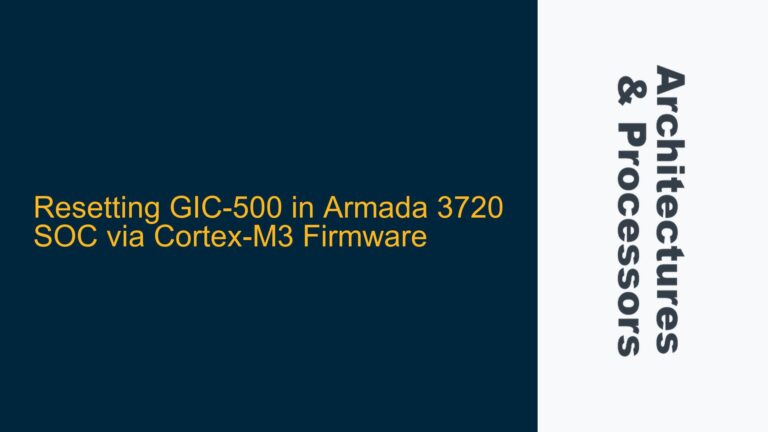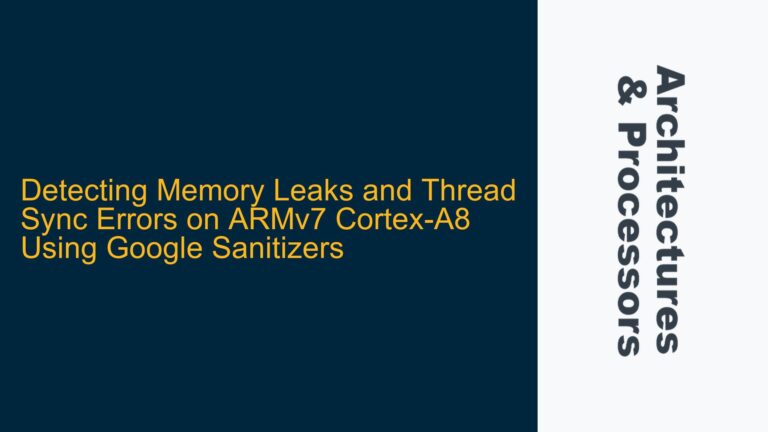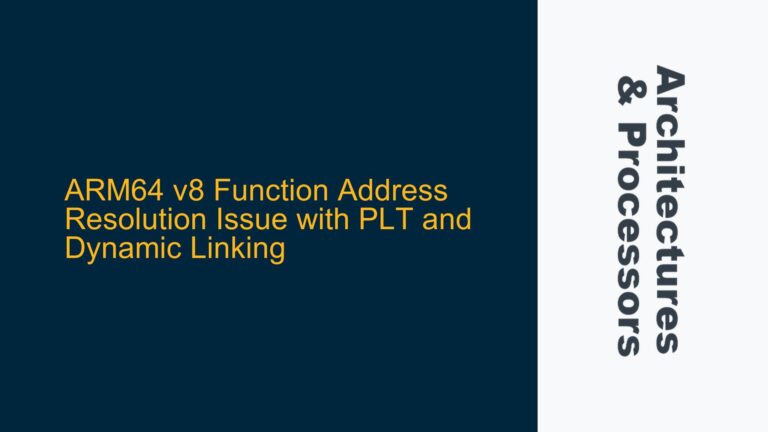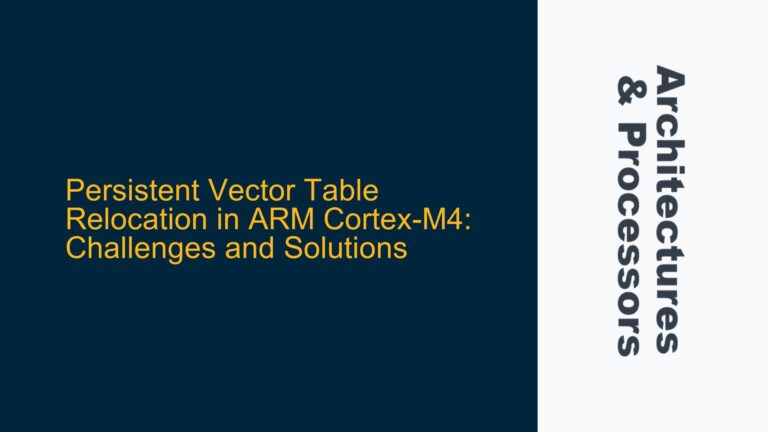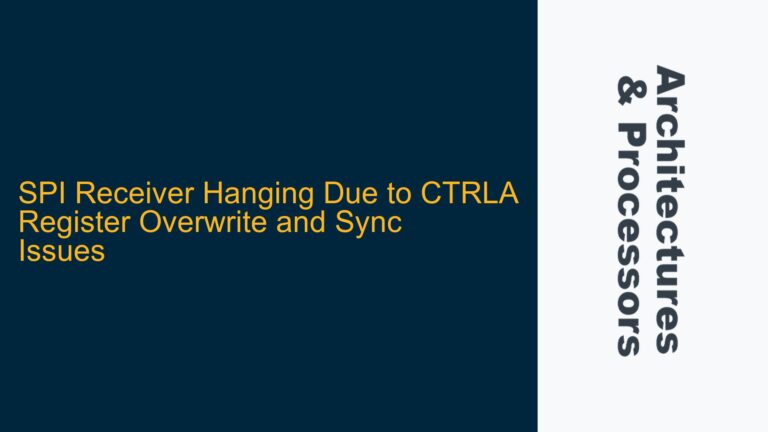NUMA Architecture in ARMv8: Core Concepts and Hardware Requirements
Non-Uniform Memory Access (NUMA) is a memory design architecture used in multiprocessing systems where memory access times depend on the memory location relative to the processor. In ARMv8 architecture, NUMA support is not inherently provided by the ARM cores themselves but is instead implemented at the System-on-Chip (SoC) level. This means that the memory controllers, interconnects, and cache hierarchies are designed to support NUMA, enabling different processors or cores to access different memory regions with varying latencies.
In ARMv8-based systems, NUMA is typically employed in high-performance computing (HPC) environments, many-core processors, and specialized systems like the Fujitsu A64FX. The ARMv8 architecture provides the foundational capabilities for NUMA, such as support for multiple memory domains and advanced cache coherency protocols. However, the actual implementation of NUMA depends on the SoC design, including the arrangement of memory controllers, interconnects like AMBA (Advanced Microcontroller Bus Architecture), and the distribution of shared resources.
The key hardware components required for NUMA in ARMv8 systems include:
- Multiple Memory Controllers: Each memory controller manages a distinct memory region, allowing for non-uniform access times.
- Interconnect Fabric: The interconnect fabric, such as AMBA, facilitates communication between cores, memory controllers, and peripherals. It must support low-latency and high-bandwidth communication to minimize performance bottlenecks.
- Cache Coherency Mechanisms: ARMv8 cores implement cache coherency protocols like ACE (AXI Coherency Extensions) to ensure data consistency across multiple cores and memory regions.
- Memory Mapping Units (MMUs): MMUs in ARMv8 cores support multiple address spaces and translation tables, enabling efficient memory access in NUMA systems.
The absence of NUMA in many ARM-based SoCs, such as those from Samsung and Broadcom, is primarily due to the target applications of these chips. Most consumer-grade SoCs prioritize cost-efficiency and power savings over the complexity and overhead of NUMA. In contrast, HPC and server-grade processors, like the Fujitsu A64FX, leverage NUMA to optimize performance for workloads that require massive parallelism and large memory bandwidth.
Challenges in NUMA Implementation: Hardware and Software Considerations
Implementing NUMA in ARMv8 systems introduces several challenges, both at the hardware and software levels. One of the primary challenges is ensuring efficient data locality. In a NUMA system, accessing local memory (memory attached to the same node as the core) is significantly faster than accessing remote memory (memory attached to a different node). Poor data locality can lead to performance degradation due to increased memory access latency.
At the hardware level, the design of the interconnect fabric plays a critical role in determining the performance of a NUMA system. The interconnect must provide low-latency paths for data transfer between cores and memory controllers while minimizing contention and bottlenecks. Additionally, the cache coherency protocol must be robust enough to handle the increased complexity of maintaining coherency across multiple memory domains.
At the software level, the operating system (OS) and applications must be NUMA-aware to fully leverage the benefits of the architecture. The OS is responsible for managing memory allocation and task scheduling to ensure that processes and data are placed in the optimal memory region. For example, Linux provides NUMA support through features like NUMA balancing, which dynamically migrates tasks and data to improve locality.
Another challenge is the complexity of debugging and optimizing NUMA systems. Performance bottlenecks can arise from subtle issues such as improper memory allocation, inefficient cache usage, or suboptimal task scheduling. Tools like numactl and perf in Linux can help diagnose and address these issues, but they require a deep understanding of the underlying hardware and software interactions.
Optimizing NUMA Performance in ARMv8 Systems: Best Practices and Techniques
To optimize performance in ARMv8-based NUMA systems, developers must adopt a holistic approach that addresses both hardware and software considerations. Below are some best practices and techniques for achieving optimal performance:
-
Data Locality Optimization: Ensure that data is allocated in the memory region closest to the core that will access it. This can be achieved through explicit memory allocation policies in the OS or by using NUMA-aware libraries and frameworks.
-
Task Scheduling and Affinity: Use CPU affinity and NUMA-aware scheduling to bind processes to specific cores and memory regions. This minimizes remote memory access and reduces latency. Linux provides tools like
tasksetandnumactlfor managing CPU and memory affinity. -
Cache Coherency Management: Leverage ARMv8’s cache coherency protocols to maintain data consistency across multiple cores and memory regions. Use memory barriers and cache maintenance operations judiciously to avoid unnecessary overhead.
-
Interconnect Optimization: Optimize the interconnect fabric to minimize latency and maximize bandwidth. This may involve tuning the AMBA configuration, reducing contention, and ensuring balanced traffic distribution.
-
Performance Monitoring and Analysis: Use performance monitoring tools to identify and address bottlenecks. ARMv8 cores provide Performance Monitoring Units (PMUs) that can be used to collect detailed metrics on cache usage, memory access patterns, and interconnect performance.
-
NUMA-Aware Application Design: Design applications with NUMA awareness in mind. This includes using parallel programming models like OpenMP and MPI, which provide constructs for managing data locality and task distribution.
By following these best practices, developers can unlock the full potential of NUMA in ARMv8 systems, achieving significant performance improvements for demanding workloads. However, it is essential to carefully balance the trade-offs between complexity, power consumption, and performance to ensure that the benefits of NUMA outweigh the costs.
In conclusion, NUMA support in ARMv8 architecture is a powerful feature that enables high-performance computing and efficient memory management in multiprocessing systems. While the implementation of NUMA is primarily a function of the SoC design, ARMv8 cores provide the necessary capabilities to support this architecture. By understanding the challenges and adopting best practices, developers can optimize NUMA performance and deliver robust, high-performance solutions for a wide range of applications.

